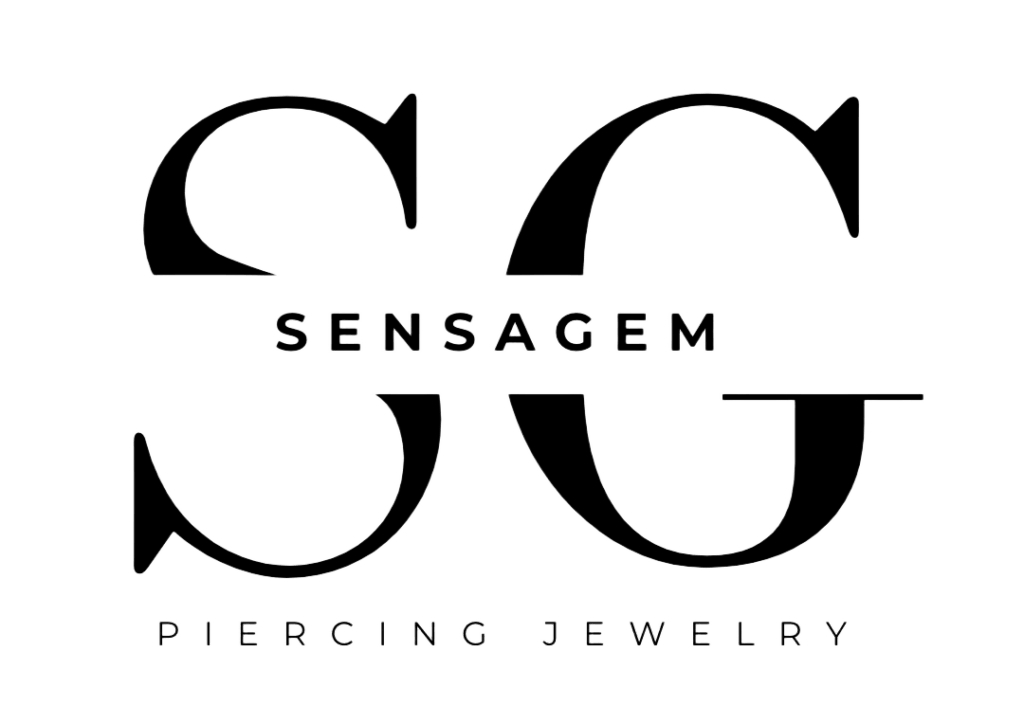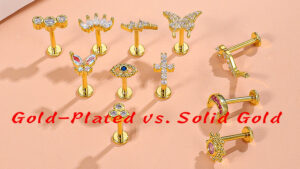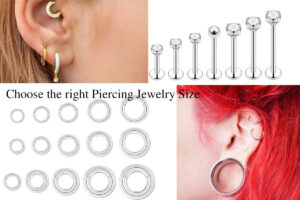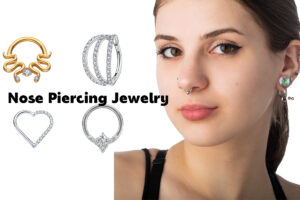Piercing jewelry is an essential part of personal expression, and its appearance and durability are often dictated by the surface treatment methods applied during production. Among these methods, PVC electroplating et Anodisation are two of the most commonly used processes. Each has its unique advantages, disadvantages, and ideal applications. Dans cet article, we will explore the differences between PVC electroplating and anodizing, focusing on their processes, benefits, environmental impact, and best uses in piercing jewelry.
1. Introduction
The jewelry used in body piercings not only serves as a decorative accessory but also plays a crucial role in the healing process of piercings. The surface finish of the jewelry is critical, as it affects the piece’s longevity, aesthetic, and even its ability to avoid causing irritation or infection. Among the many surface treatment options, PVC electroplating et Anodisation are two popular methods used in the production of piercing jewelry.
These processes significantly impact the appearance, durabilité, and usability of the jewelry, which is why understanding their differences is important for both manufacturers and consumers. Let’s dive into these two surface treatment methods to understand their processes and benefits.
2. Basic Overview of PVC Electroplating and Anodizing
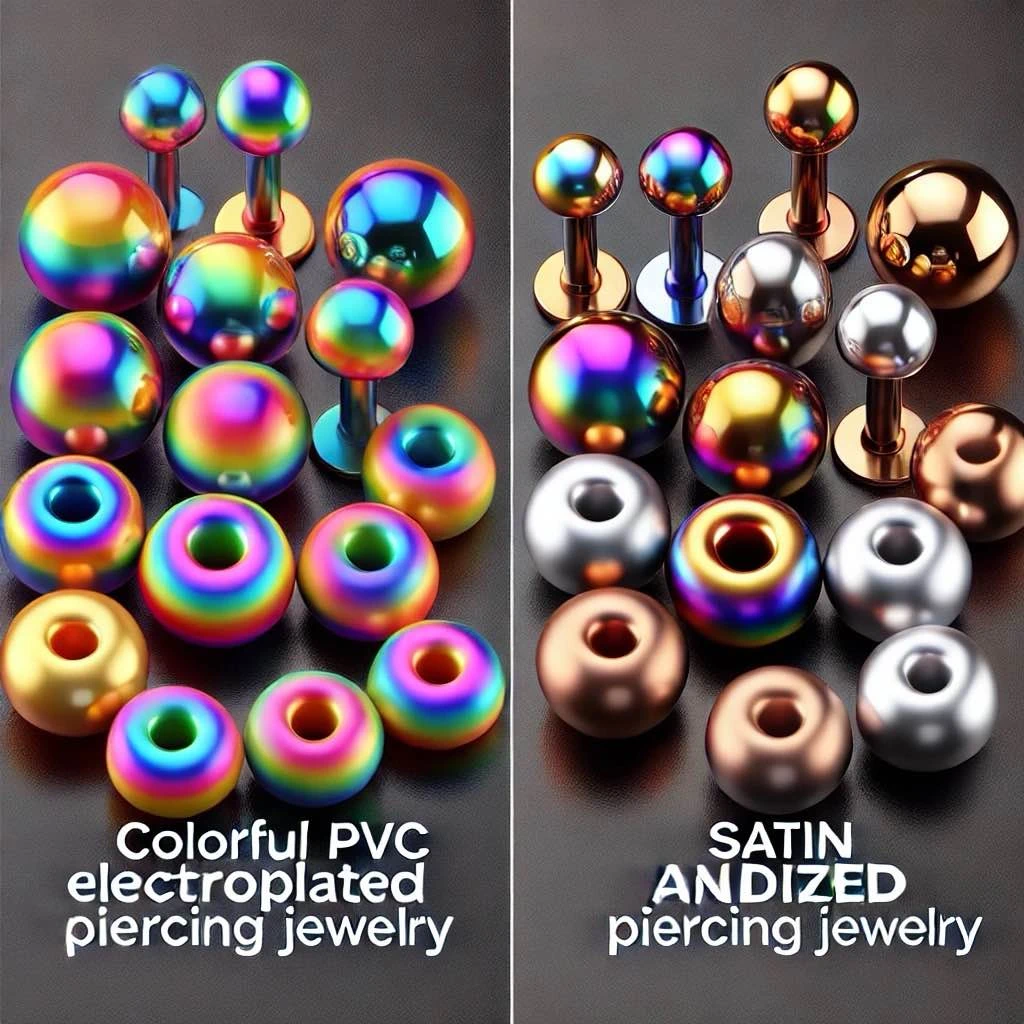
PVC Electroplating: The Basics
PVC electroplating is a process that uses electrochemical methods to apply a thin layer of polyvinyl chloride (PVC) to the surface of jewelry. The process involves immersing the jewelry in an electrolyte solution containing PVC and then applying electrical current. This causes the PVC particles to adhere to the surface of the jewelry, forming a thin, durable coating.
•Process: The jewelry piece is submerged in a solution that contains PVC particles. An electrical current is passed through the solution, which causes the PVC to deposit onto the surface of the metal.
•Principales fonctionnalités: PVC electroplating results in a glossy, colorful finish. It’s commonly used on stainless steel and other metals to create vibrant, shiny surfaces.
•Applications: It is most commonly used for creating piercing jewelry that requires bright colors and aesthetic appeal.
Anodisation: The Basics
Anodisation is a process used primarily on metals like aluminum and titanium. In anodizing, the jewelry is immersed in an electrolytic bath, and an electrical current is applied to create an oxide layer on the surface of the metal. This process not only makes the metal more durable but also gives it a unique, attractive finish.
•Process: The metal is submerged in an electrolytic bath, usually containing sulfuric acid. When electrical current is applied, the metal undergoes oxidation, forming a protective oxide layer on the surface.
•Principales fonctionnalités: Anodizing results in a matte or satin finish that is highly durable, résistant à la corrosion, and can be dyed in various colors, though the color options are usually more subdued compared to PVC electroplating.
•Applications: Commonly used for titanium and aluminum jewelry, anodizing is favored for high-end piercing jewelry due to its durability and hypoallergenic properties.
3. Comparing PVC Electroplating and Anodizing
To better understand the differences between these two processes, we will compare them in terms of appearance, durabilité, environmental impact, et cost.
Appearance and Aesthetic
• PVC Electroplating:
•One of the primary advantages of PVC electroplating is its ability to produce vibrant and glossy finishes. Jewelry pieces treated with PVC electroplating can come in a wide array of colors, from bright hues to metallic finishes, making them highly appealing to those looking for bold, attention-grabbing jewelry.
•Le glossy and smooth texture provided by PVC electroplating is perfect for jewelry designs that demand high shine and bright colors.
• Anodisation:
•Anodisation, d'autre part, results in a more natural metallic finish, with colors being more subdued and matte. While anodized jewelry can be dyed in a variety of colors, the hues are generally softer and more subtle compared to PVC electroplating.
•Le finition of anodized jewelry tends to have a unique, textured, and satin appearance, which appeals to those looking for a more understated yet elegant look.
Durability and Wear
• PVC Electroplating:
•While PVC electroplating creates a beautiful, colorful finish, the durability is relatively low. The PVC coating is softer and can easily scratch, causing the color to fade or wear off. This makes PVC electroplating less suitable for jewelry that is subjected to heavy wear, such as body piercings that remain in place for long periods.
•Not suitable for high-impact environments, PVC electroplating is more commonly used in decorative jewelry rather than functional body jewelry.
• Anodisation:
•Anodized jewelry, especially when applied to titanium or aluminum, is highly durable. The anodized layer is harder than the base metal and offers excellent résistance à la corrosion et wear resistance. This makes anodizing an ideal process for piercing jewelry, as it ensures the jewelry will last much longer and withstand regular wear without easily scratching or fading.
•The anodized finish is also less prone to chipping and can withstand prolonged exposure to water and harsh environments.
Environmental Impact
• PVC Electroplating:
•PVC electroplating involves polyvinyl chloride, which is not biodegradable and poses environmental concerns, especially during the production and disposal processes. En plus, the chemicals used in the electroplating bath can be harmful to the environment if not properly disposed of.
•Not as eco-friendly as anodizing, PVC electroplating can be problematic from a sustainability perspective.
• Anodisation:
•Anodisation is considered more environmentally friendly. The process involves fewer toxic chemicals, and the anodized layer itself is a part of the metal, meaning that it doesn’t involve the addition of any harmful substances that could pose environmental risks. En plus, anodizing helps extend the life of the jewelry, reducing the need for replacements and waste.
4. Applications in Piercing Jewelry
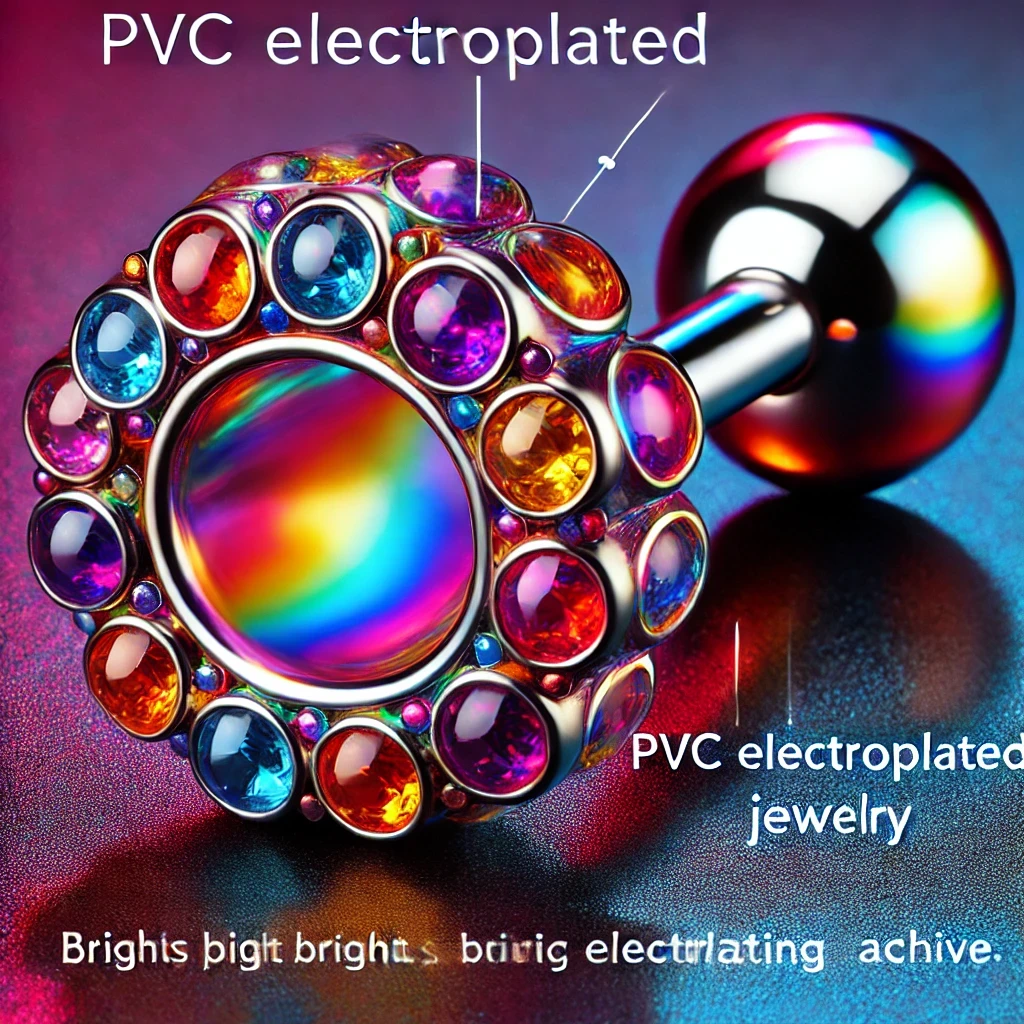
PVC Electroplating in Piercing Jewelry
•PVC electroplating is commonly used for decorative piercings that need a vibrant, shiny finish. It is ideal for colorful nose rings, cernes à lèvres, and earrings, where the emphasis is on appearance rather than durability.
•Mass production of lower-cost piercing jewelry is another area where PVC electroplating excels. It allows manufacturers to produce a wide variety of designs in many colors at an affordable price.
Anodisation dans des bijoux perçants
•Anodizing is often used for premium-quality piercing jewelry made from materials like titanium and aluminum. It is highly popular for tongue rings, eyebrow rings, and dermal piercings that require both aesthetic appeal and durability.
•Le durabilité of anodized jewelry makes it a suitable option for those who want to invest in jewelry that will withstand daily wear without compromising its appearance over time.
5. Conclusion
Both PVC electroplating et Anodisation offer unique advantages for piercing jewelry, but the right choice depends on the consumer’s needs and priorities. PVC electroplating provides vibrant colors and is rentable, making it ideal for fashion-forward individuals looking for bold jewelry at a lower price. D'autre part, Anodisation offers superior durability, environmental benefits, and a more look premium, making it perfect for high-end piercing jewelry that lasts.
When choosing between the two, consider factors like color preference, durabilité, budget, et environmental impact. Each process has its ideal application, and understanding these differences can help you make an informed decision about which jewelry best suits your needs.
